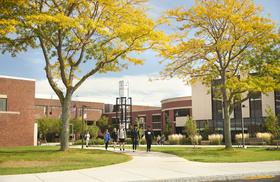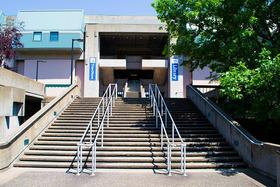While community college has traditionally been a budget-friendly place to pursue higher education, some high school students have discovered they can take that benefit a step further by taking college courses while they are still in high school. This program, referred to as dual enrollment, is especially advantageous because high school students do not have to pay tuition for classes taken during the high school years. However, community colleges in Florida have found that the popularity of dual-enrollment programs is creating a financial dilemma for the very schools that originally used the programs to encourage high-achieving high school students to pursue higher education.
The Benefits of Dual Enrollment
Two recent studies from the National Center for Postsecondary Research show that dual enrollment has some positive effects on college enrollment and completion. According to a report at the Council for the Study of Community Colleges website, one study found that students who took dual enrollment classes were12 percent more likely to go to college and seven percent more likely to earn a bachelor’s degree than those who did not participate in dual enrollment courses. However, the positive effects were restricted to students who took classes on the college campus, instead of in their own high school classrooms.
The second study found that students who passed a college algebra placement test and participated in a dual-enrollment college algebra class were 16 percent more likely to go to college and 23 percent more likely to earn a degree. Both of these studies specifically tracked high school seniors in Florida between 2000 and 2002 – over the span of two school years. The studies also showed the best way to structure dual-enrollment courses to guarantee the best odds of success: placing classes on the college campus and choosing the right type of courses to facilitate success.
This video offers a student's perspective on dual enrollment.
How Dual Enrollment Works
High school students in Florida who want to take dual-enrollment courses can find the information they need at their high school counselor’s office or at the website of the participating community college. For example, the website for South Florida Community College provides information about the dual-enrollment courses available and the application process. According to the website, the courses are available based on the approval of the state of Florida. The accelerated courses offer students the ability to jumpstart their college plans or prepare for a career right out of high school with technical courses available in the dual-enrollment program.
Students are encouraged to apply for dual-enrollment courses through their high school or the community college offering the classes. Courses are available on the college campus, at the high school, or online. Fees are not charged to students at particular high schools who meet the minimum core requirements for high school graduation credit – including registration fees and the cost of books. It is an attractive prospect to high-achieving high school students looking ahead to college, but lacking the funds to pay for higher education right away.
This video reports on dual enrollment in a Californiacommunity college.
The Dual-Enrollment Challenge
As the benefits of dual enrollment become more widely known among high school students in Florida, the program has really taken off in popularity. According to a report at Hernando Today, there are currently 2,171 students from the Pasco and Hernando school district enrolled in classes through Pasco-Hernando Community College. Because students in the program do not pay tuition for their classes, the college ended up waiving more than $2 million in tuition fees last year alone.
In the past, the state had provided about 75 percent of the school’s operating budget, making it relatively easy for the college to absorb those tuition fee waivers. However, state support has since been cut to just 47 percent of the school’s budget, forcing school officials to scramble to find the money to continue to provide the same level of education to students. Now, the $2 million in tuition waivers becomes much more difficult to swallow.
“One of the major things about dual enrollment is we’ve kind of become the victims of our own success,” Tim Beard, the vice president of student development and enrollment management for Pasco-Hernando Community College, told Tampa Bay Online. “It’s a good problem to have, but we do want to find ways to fix it,” Beard added to the Tampa Bay Times.
This video reports on the opinion that dual enrollment is better than doing Advanced Placement in high school.
Possible Solutions
The school is looking to the state for at least some of the financial relief it needs to continue offering dual-enrollment benefits to Florida high school students. State legislators have already been made aware of the problem, although their hands are somewhat tied as to what they can do. Right now, there is simply not enough state money to go around.
“We told them point-blank, we need to offset that with some financial support,” Steve Schroeder, the general counsel and executive director of governmental relations, told Tampa Bay Times. “But we do not want to take that from any other education sectors,” Schroeder added. “We backed off on that because there is no new money.”
Dual-enrollment courses are first available to students already enrolled on the college campus. Once those students are registered, high school students are offered slots in the courses that are left. The courses are typically popular, so there are often few slots. Most educators in the state agree that it is important to resolve the issues surrounding dual enrollment since it provides a significant benefit to high-achieving high school students around the state. Solutions to the problem include the possible addition of dual-enrollment classes at the high school or online.
Questions? Contact us on Facebook. @communitycollegereview














